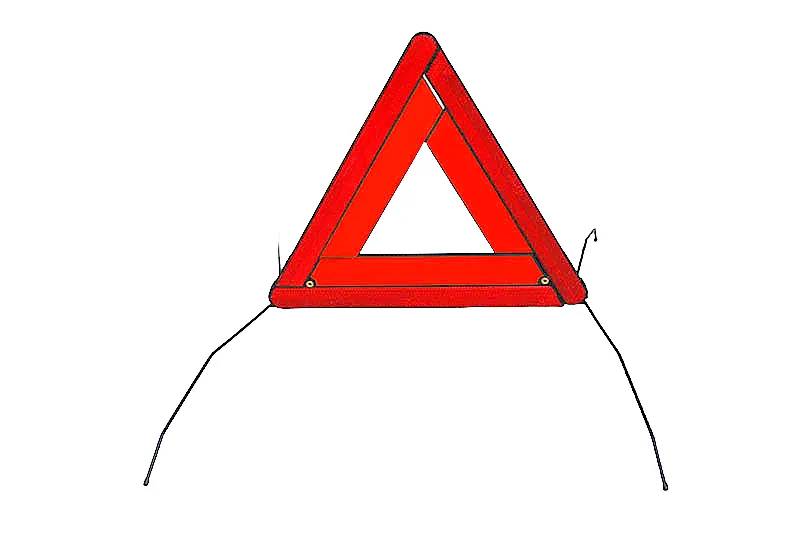Production of Warning Triangles
The production of warning triangles involves several key processes to ensure the safety and reliability of the final product. The primary material used in the manufacture of warning triangles is high-quality plastic and reflective materials, which are durable and weather-resistant.
The production process begins with the selection of raw materials. The plastic is carefully chosen to be lightweight yet strong enough to withstand external forces. Reflective sheeting is then applied to the triangle to ensure high visibility during both day and night. The reflective material is a critical component as it ensures the triangle can be seen from a distance, even in low-light conditions.
Once the materials are prepared, the components of the triangle are molded into shape. The reflective sheeting is carefully applied to the surface, ensuring it adheres securely to prevent peeling or fading over time. The edges are reinforced to prevent cracking, and the triangle’s base is designed for stability, even in strong winds.
Maintenance of Warning Triangles
Proper maintenance of warning triangles is essential to ensure they remain effective and durable over time. Regular checks should be conducted to ensure the reflective material is intact and the triangle is not damaged. If the reflective sheeting starts to peel or the plastic becomes brittle, it’s important to replace the triangle to maintain its visibility and effectiveness.
Warning triangles should be stored in a dry and cool location when not in use. Exposure to extreme temperatures, excessive moisture, or direct sunlight can degrade the materials and affect the reflective properties. Cleaning the triangle should be done using a soft cloth and mild detergent to avoid damaging the surface. Harsh chemicals or abrasive materials should be avoided.
Transportation of Warning Triangles
Transportation of warning triangles requires attention to the packaging and handling of the products to prevent damage during transit. The triangles should be packed securely to prevent any scratches, cracks, or bending. Packaging should be strong enough to protect the reflective material from being scratched or damaged.
It’s important to ensure the packaging is labeled clearly with handling instructions. Fragile items should be marked, and the transportation process should avoid exposing the product to any conditions that might damage it, such as excessive moisture or heat.
Usage of Warning Triangles
The warning triangle is an essential safety device used in emergency situations, particularly when a vehicle has broken down or is stationary on the side of the road. It is a legal requirement in many countries for drivers to carry a warning triangle in their vehicles.
The proper use of the warning triangle is critical for ensuring safety on the road. In the event of a breakdown or emergency, the driver should place the triangle at least 50-100 meters behind the vehicle, depending on the traffic conditions, to alert other drivers. The triangle should be placed on a stable surface, and it must be visible to approaching vehicles.
It is important to remember that the warning triangle is not a substitute for other safety measures, such as using hazard lights or wearing reflective vests. The triangle is meant to be used in conjunction with these other safety devices to enhance visibility and reduce the risk of accidents.
Conclusion
The production, maintenance, transportation, and usage of warning triangles are critical to ensuring they serve their intended purpose of improving road safety. By understanding the importance of each of these aspects, manufacturers and users can ensure the effectiveness of the warning triangle in emergency situations. Regular maintenance, careful transportation, and proper usage are key to keeping the warning triangle functional and reliable for many years.




Leave a comment